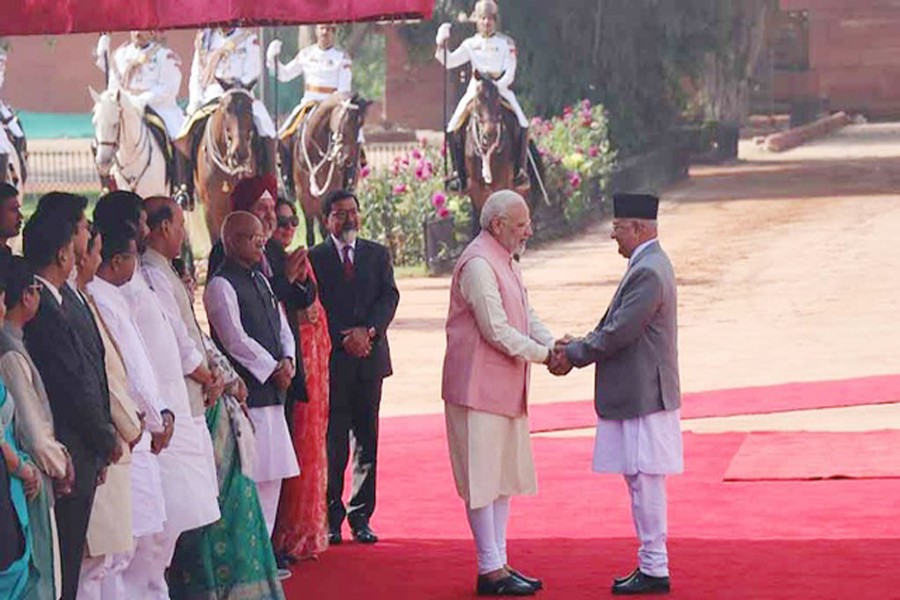Last week, India and Nepal started a new journey together towards understanding and cooperation, moving away from an era of covert and overt conflict, reports Reuters.
And surprisingly, the attempt to reset the ties was made by two headstrong and nationalist leaders - Narendra Modi of India and KP Sharma Oli of Nepal who met on Apr 07 in New Delhi.
Admittedly, Modi was disturbed by Oli's past record of being unabashedly pro-China, and his stridently nationalistic utterances in the run up to the parliamentary elections in 2017, where he swept into power in an alliance with the Maoist Centre.
And Oli, on his part, had bitter memories of his ousting in 2016 following a No Confidence Motion in parliament which purportedly had India's backing.
However, both Modi and Oli have undergone recent changes in temperament.
An Eminent Persons Group was appointed to go into the question of re-setting Indo-Nepal ties. Modi invited Oli when the latter took office in February this year. And Oli responded positively by making the Indian trip his first foreign visit as the new prime minister.
Speaking to reporters upon his return to Kathmandu on Apr 08, Oli said that Nepal's relations with India have "improved as a result of his visit" and added: "Nepal-India relations won't turn sour until someone spoils it."
In New Delhi, Oli and Modi agreed to connect Nepal with India's vast railway network with the aim of linking "Mount Everest with the Indian Ocean", as Oli put it.
The Kathmandu-India railway deal is seen as New Delhi's attempt to stop Oli from agreeing to the Chinese proposal to extend the Tibetan railway to Nepal and thence to India.
Oli and Modi also remotely inaugurated an Integrated Border Check Post in Birganj and the Amlekhganj-Motihari oil pipeline. The two sides also reached an understanding to expedite the much-delayed Pancheshwar river project, the Tarai road network, and other infrastructure projects.
Oli has realised that he needs India to keep Nepal's economy ticking, given its traditional dependence on its giant southern neighbour for a host of things. But at the same time he needs China's funds for massive infrastructural development. He intends to balance India and China.
However, India has a long way to go before it can claim to match China's influence in Nepal.
In an article in The Dialogue Prof BR Deepak of Jawaharlal Nehru University in New Delhi, says that China is executing high value projects such as the Pokhara airport ( US$216 million); Melamchi Water Supply Project (US$ 294.4 million); and the Lumbini Project (US$ 3 billion) which will have an airport, hotels, a convention centre, temples and a Buddhist University plus a connecting highway. Then there is the 750 MW project on the West Seti River.
At the November 2017 Nepal Investment Summit, 89 Chinese companies had pledged a total investment of $ 8.3 billion, while 21 Indian companies together pledged only $ 317 million.
However, according to the Kathmandu Post, India's problem in Nepal is not so much the number of projects but the poor implementation of existing ones.
"After a big hoopla, they mostly seem to languish. As a result, India has developed a reputation for slow and poor implementation," the paper says.


